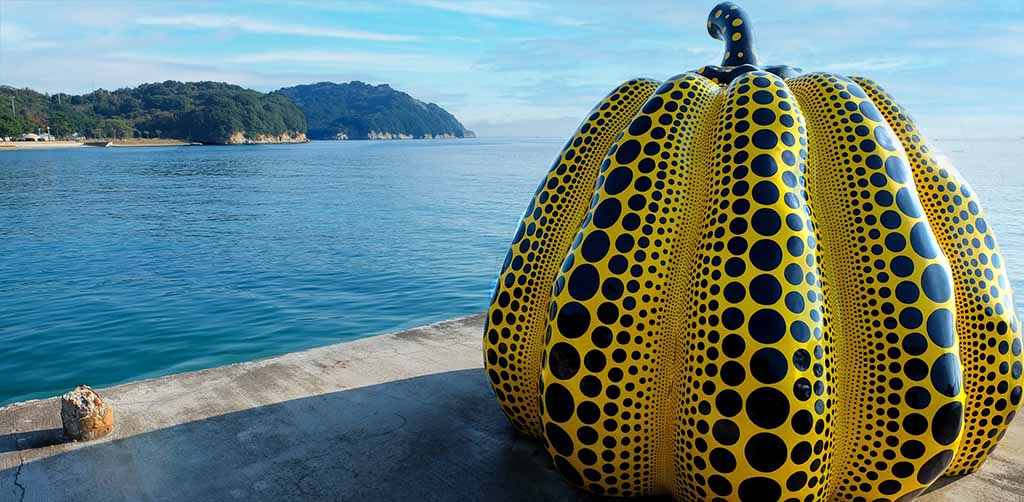Explore Naoshima Japan’s famed "Island of Art," which has become a mecca for contemporary art and architecture fans. Naoshima sounds like a single island although is actually comprised of over two dozen islands dispersed in the Seto Inland Sea. Once an area of heavy industry, Naoshima proper has being reborn as a massive space of modern art museums with its architectural buildings and sculptures distributed all around its landscapes bringing worldwide renown. Throughout the island are scattered outdoor sculpture and installation art by world-renowned artists such as Kusama Yayoi. Indoors, impressive art collections can be found at several museums including the Benesse House Museum, itself part of a series of striking architectural structures including dual-purpose lodging and museum sites.
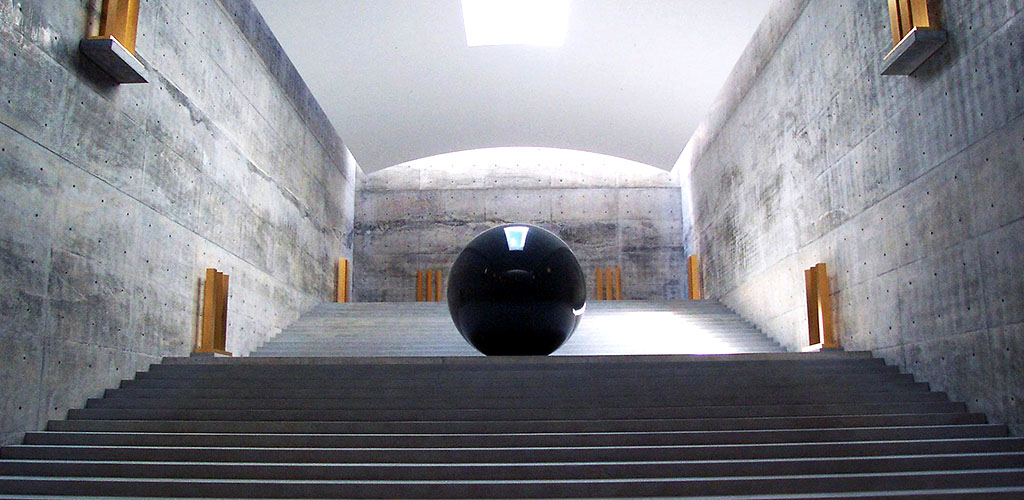
Explore Naoshima's sublime, tranquil landscapes and modern art installations, including the Benesse Art Site, Chichū Art Museum, Lee Ufan Museum, the Art House Project, and Ando Museum world's away from the frenetic urban cities on the mainland. A visit to nearby Teshima is also highly recommended.
Naoshima Background
During the 1980s, Soichiro Fukutake, then the chairman of Benesse Corporation, a large company headquartered in Okayama, had a vision of transforming Naoshima, an island previously known for its industrial operations under the Mitsubishi Group, into an arts center. To realize his vision, he enlisted the expertise of renowned architect Tadao Ando. Ando went on to design several museums and all the buildings that make up the expansive "Benesse Art Site Naoshima." Architect Kazuhiro Ishii designed the town's facilities and schools.
Naoshima Museums
The Benesse House Museum
Located at the southern end of Naoshima perched atop a cliff, the museum provides breathtaking views of the Seto Inland Sea. The museum features stunning abstract architecture, characterized by imposing volumes and concrete walls and houses an impressive and diverse collection of artworks, while the surrounding grounds of the main building, including the park and nearby beach, are adorned with numerous sculptures, including colorful installations by Niki de Saint Phalle and Yayoi Kusama's famous yellow pumpkin (Kabocha), which has become the unofficial symbol of Naoshima.
The famous art museum also contains forty hotel rooms in addition to its exhibition spaces. Issen, the onsite cafe-restaurant that offers a panoramic view of the sea. The souvenir shop is also well-stocked, and fans of Tadao Ando's architecture will be satisfied. Private group visits may be arranged for 9 people and more.
Chichū Art Museum
The Chichū Art Museum is a striking structure that was built entirely underground to avoid affecting the picturesque scenery of the Seto Inland Sea, yet is fused with natural light beaming in throughout the day. Constructed in 2004, by architect Tadao Ando using concrete, iron, glass, and wood, the design of the space is reduced to an absolute minimum, reimagining the traditional relationship between nature and man. The museum collection features works by Claude Monet (including five paintings from the Water Lilies series), James Turrell, and Walter De Maria on permanent display.
Lee Ufan Museum
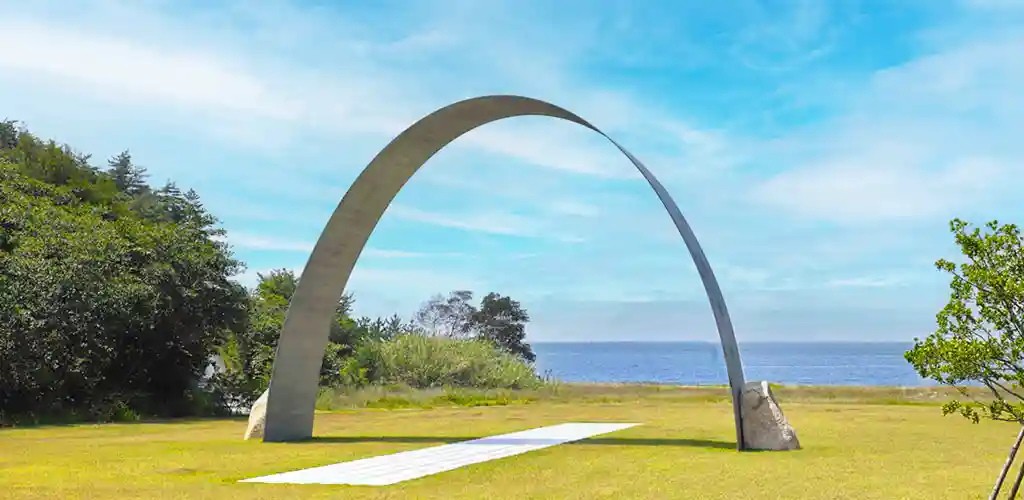
The Lee Ufan museum features outdoor installations, with a beautiful backdrop of the coastline. The museum, opened in June 2010, is the first museum devoted exclusively to the internationally-acclaimed artist Lee Ufan. The permanent collection is more suited to architecture aficionados, but may seem a bit too light for the others.
Ando Museum
A Tadao Ando-designed inner space, framed by unadorned concrete walls, infuses this 100-year-old traditional wooden house in Honmura with new life. Here, contrasting elements of past/present, wood/concrete, and light/shadow overlap in a microcosm of Ando's architectural style. Learn about Ando's work and Naoshima history through photographs, sketches, and models, and see how the museum itself has given the venerable old house new life.
Art House Project
Further away from the tranquil shores of the island’s southern coast, Honmura Port offers a livelier village setting and is where the Art House Project is situated, where there has been an artistic renovation of several traditional houses: The Art House Project began in 1998 with Tatsuo Miyajima's Kadoya, but remains in progress and presently comprises seven houses: Kadoya, Minamidera, Kinza, Go'o Shrine, Ishibashi, Gokaisho, and Haisha, taking empty houses scattered about residential areas, and turning them into spaces and works of art, weaving in the history and memories when the houses were homes. Encounters between travelers and locals will provide occasions for a variety of interesting encounters. Art House Project homes include:
- Kinza house, visited alone and upon reservation only. With solitude as a companion, sit on a wooden bench to admire the artwork of Japanese artist Rei Naito, who restored the house.
- Haisha, formerly a dentist office, before being converted into a stylish and original house.
- Minamidera was designed by artist James Turrell, featuring a sensory experience involving dark spaces and illuminated screens. The building itself is newer and was also designed by Tadao Ando.
- The first house of the project, Kadoya, is marked by an LED artwork set around a pond;
- Go’o Shrine is an unusual installation featuring a striking glass stairway descending high concrete walls.
- Gokaisho dwells on the camellia flower and the passing of seasons, based on the opposition of right and wrong.
- Removed from the other houses, Ishibashi was formerly the house of a local family that worked in the salt industry. It's fusuma sliding doors are beautifully lit up, depending on the season.
- Near Honmura Port, the Ando Museum was established in a minka traditional house, which was completely redesigned in the style of the modern Japanese architecture.
Miyanoura Gallery 6
Opened in the summer of 2013, and located in the Miyanoura District on Naoshima Island, architect Taira Nishizawa has transformed "Pachinko 999 (Three Nine)," a former amusement arcade enjoyed by residents of the island, along with an adjoining park, into a new space where visitors and local people mingle and relax. In future, it is planned as a space for special displays, mainly of photography and video art.
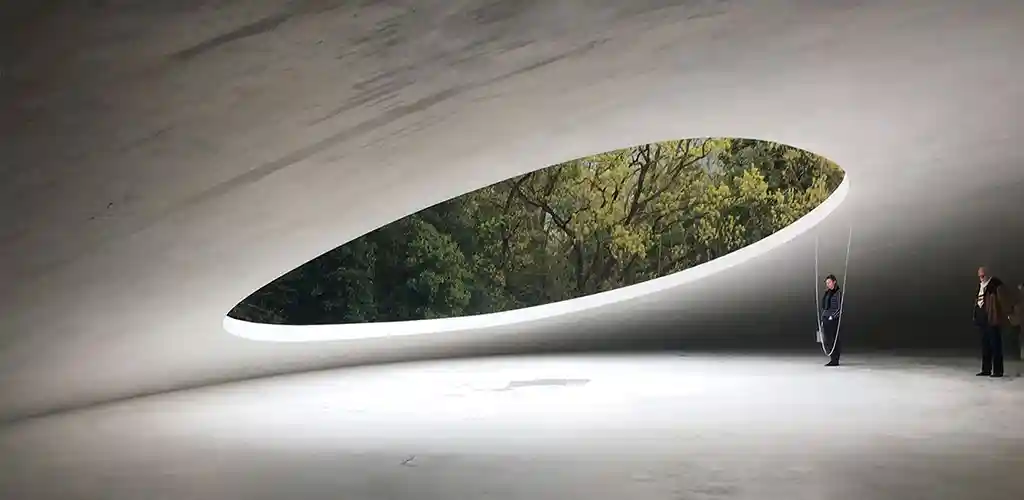
Teshima
Located on Teshima Island, but administered by the Benesse foundation, is a worthwhile daytrip from Naoshima. The museum unites the creative visions of artist Rei Naito and architect Ryue Nishizawa, stituated on a hill on the island of Teshima overlooking the Seto Inland Sea. The museum, which is described as resembling a water droplet at the moment of landing, is located adjacent to a rice terrace that was restored in collaboration with local residents.
Exploring Naoshima
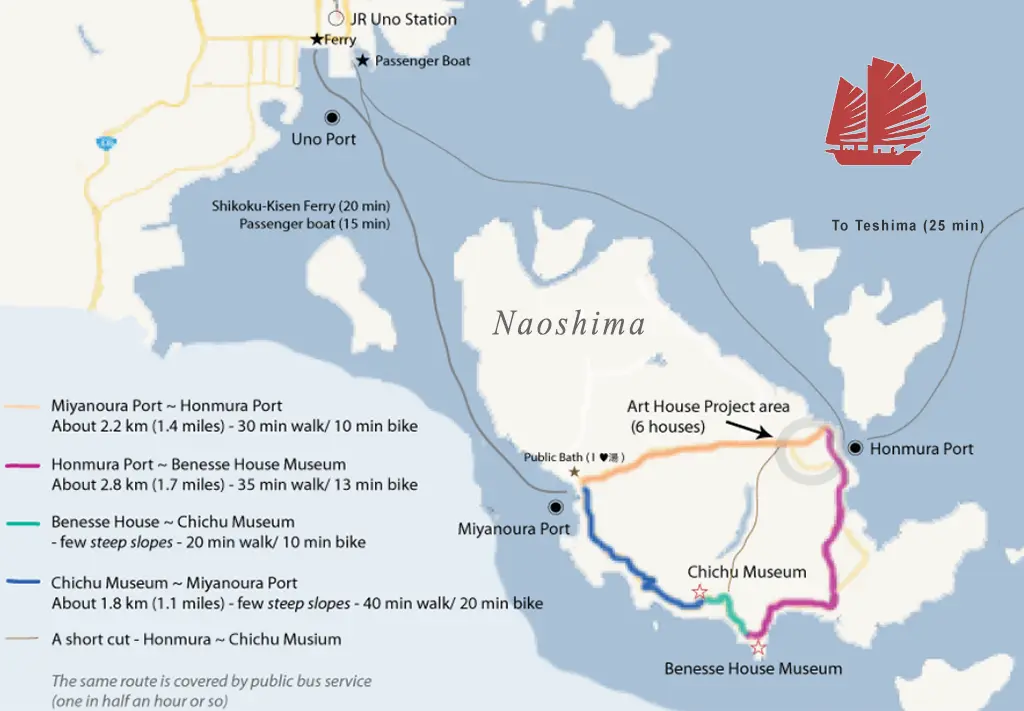
Most of its museums are closed on Monday, except for the Benesse House and the island can be pleasantly deserted. It's popular to stroll between the installations, but here is also a courtesy bus and now e-bikes. Naoshima changes day to day and according to the time of the year, a changing tableau of sky, ocean, and island landscape. The climate varies from a from a high average of 49° in January to 90°in August. Rainfall is infrequent, with September being the wettest with rain about every third day.
At the end the day of strolling, the sento public bath called I Love Yu (I♥︎湯) offers a comfortable soak in its warm waters (102-104°F) and is located across Miyanoura port, where Yayoi Kusama’s Red Pumpkin is displayed.
Naoshima Events
The very popular Setouchi Triennale is the highlight of Naoshima and its neighboring sister islands that also host the event. The international art fair has been taking place every three years since 2010, over three periods of temporary exhibitions in spring , in summer and in autumn. In 2019, for the 4th Setouchi Triennale, Naoshima received one million visitors.
Teshima Touring
We always encourage our travelers to include Teshima in their visit. We will arrange a private boat to cruise to Teshima Island to visit the interesting Teshima Art Museum, “Les Archives du Cœur” installation, and the Teshima Yokoo House, and continuing by boat to explore the Noguchi Museum Takamatsu.
Accommodation in Naoshima
BENESSE HOUSE
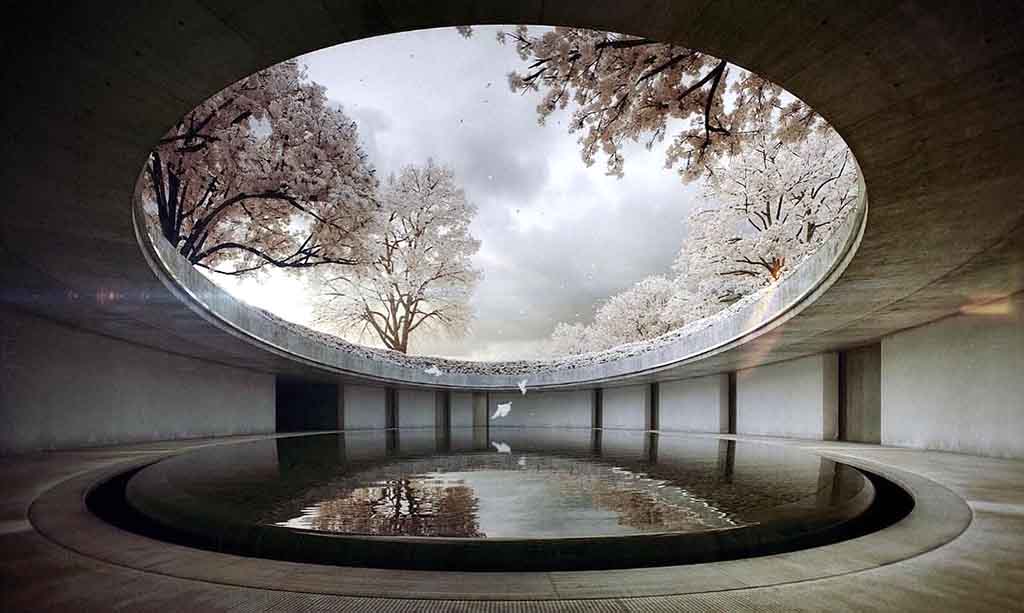
Benesse House, is actually a combined museum and hotel, comprised of four accommodation facilities—Museum, Oval, Park and Beach, which were all also designed by Tadao Ando. Situated on a hill and connected to the Museum building by a monorail, our top recommendation, Oval, offers spacious and luxurious lodgings in a mere six rooms. Large floor-to-ceiling windows in the guest rooms offer expansive views of the Inland Sea. The suites each feature a mural, painted by Richard Long and David Tremlett, when they visited Naoshima. There are expansive views of the Inland Sea from the large terrace.
Pre- and Post-Naoshima Travel Recommendations
Naoshima is conveniently accessed from Osaka or Kyoto, by rail or private car, and compliments an trip that includes nearby Mount Koya, a tranquil place of Zen Buddhist monasteries situated in a beautiful forested mountain.
